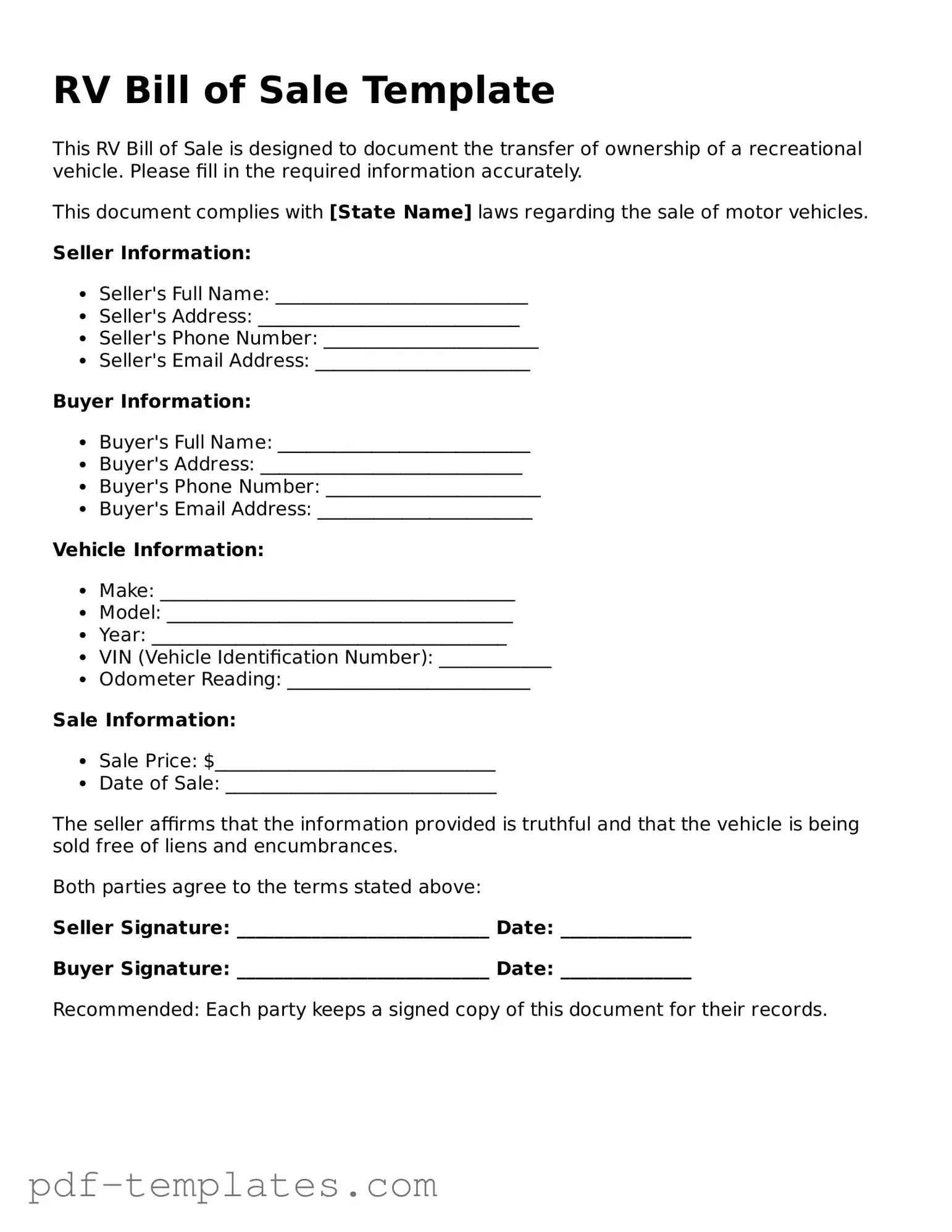The RV Bill of Sale form is similar to the Vehicle Bill of Sale, which serves a similar purpose for automobiles. Both documents provide a record of the transfer of ownership from the seller to the buyer. They typically include details such as the vehicle identification number (VIN), make, model, and year of the vehicle. Just like the RV Bill of Sale, the Vehicle Bill of Sale can serve as proof of purchase and may be required for registration purposes in many states.
Another document akin to the RV Bill of Sale is the Boat Bill of Sale. This form is used when a boat is sold or transferred. It contains essential information such as the hull identification number, make, model, and year of the boat. Like the RV Bill of Sale, it protects both the buyer and seller by documenting the transaction and outlining any conditions or warranties agreed upon during the sale.
The Cosmetology License Renewal California form serves as a vital component for beauty industry professionals aiming to renew their licenses in California. With requirements for comprehensive personal information and fee submission, it's imperative to complete this form accurately to maintain a valid license. For those looking for necessary documentation, All California Forms can assist in ensuring compliance and avoiding legal complications from operating with an expired license.
The Motorcycle Bill of Sale is also similar in function. It outlines the sale of a motorcycle, providing details such as the VIN, make, model, and year. This document serves as a legal record of the transaction and can be critical for registration and titling purposes. Both the Motorcycle and RV Bill of Sale help ensure that ownership is clearly established, minimizing disputes in the future.
In a similar vein, the Trailer Bill of Sale is used for the sale of trailers. This document includes information such as the trailer's VIN, make, model, and year. Just as with RVs, trailers require proper documentation for registration. The Trailer Bill of Sale acts as proof of ownership transfer, protecting both parties involved in the transaction.
The Aircraft Bill of Sale is another document that shares similarities with the RV Bill of Sale. This form is used for the transfer of ownership of an aircraft. It includes details like the aircraft's registration number, make, model, and year. Both documents serve to formalize the sale and provide a clear record of ownership, which is essential for compliance with federal aviation regulations.
The Mobile Home Bill of Sale is also relevant. This document is used when selling a mobile home, detailing information such as the home’s serial number, make, model, and year. Like the RV Bill of Sale, it provides a clear record of the transaction and is often required for title transfer, ensuring that the new owner can properly register their mobile home.
The General Bill of Sale is a more versatile document that can be used for various types of personal property, including furniture, electronics, and collectibles. While it may not contain specific details like VINs, it serves the same fundamental purpose of documenting a sale and transferring ownership. The General Bill of Sale can be adapted for different types of transactions, similar to how the RV Bill of Sale is tailored for recreational vehicles.
The Lease Agreement can also be compared to the RV Bill of Sale in terms of documenting an arrangement. While the RV Bill of Sale transfers ownership, a Lease Agreement outlines the terms under which a property, such as an RV, is rented. Both documents are essential in their respective contexts for establishing rights and responsibilities between parties.
Lastly, the Warranty Deed is a legal document used in real estate transactions. It transfers ownership of property and provides guarantees about the seller's right to sell. While it differs in context from the RV Bill of Sale, both documents serve to establish clear ownership and protect the interests of the parties involved. Each document plays a vital role in ensuring that transactions are legally recognized and enforceable.
